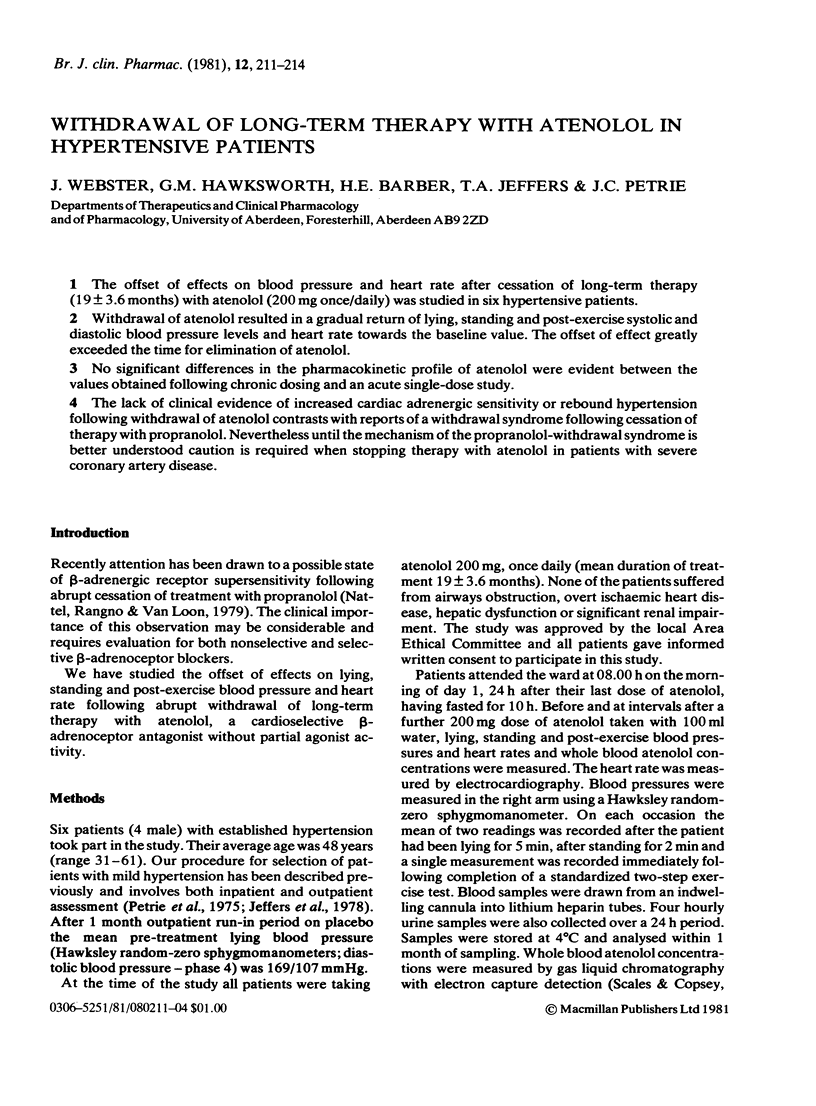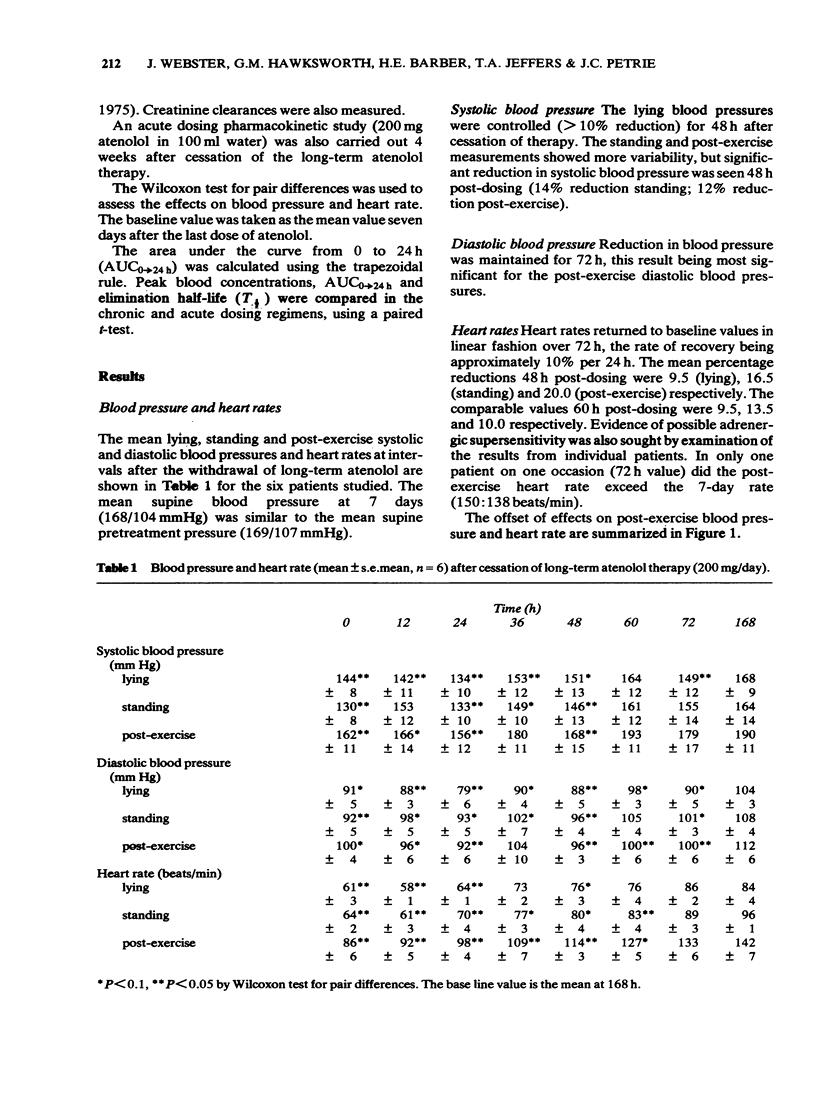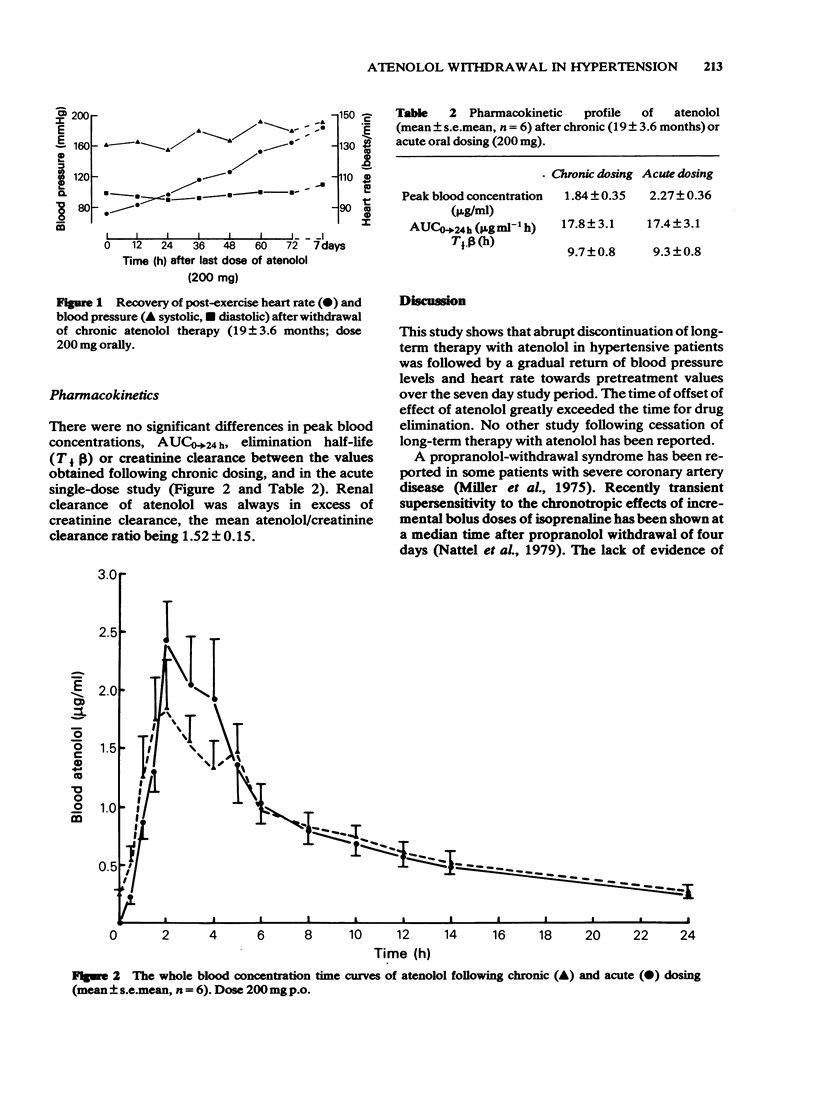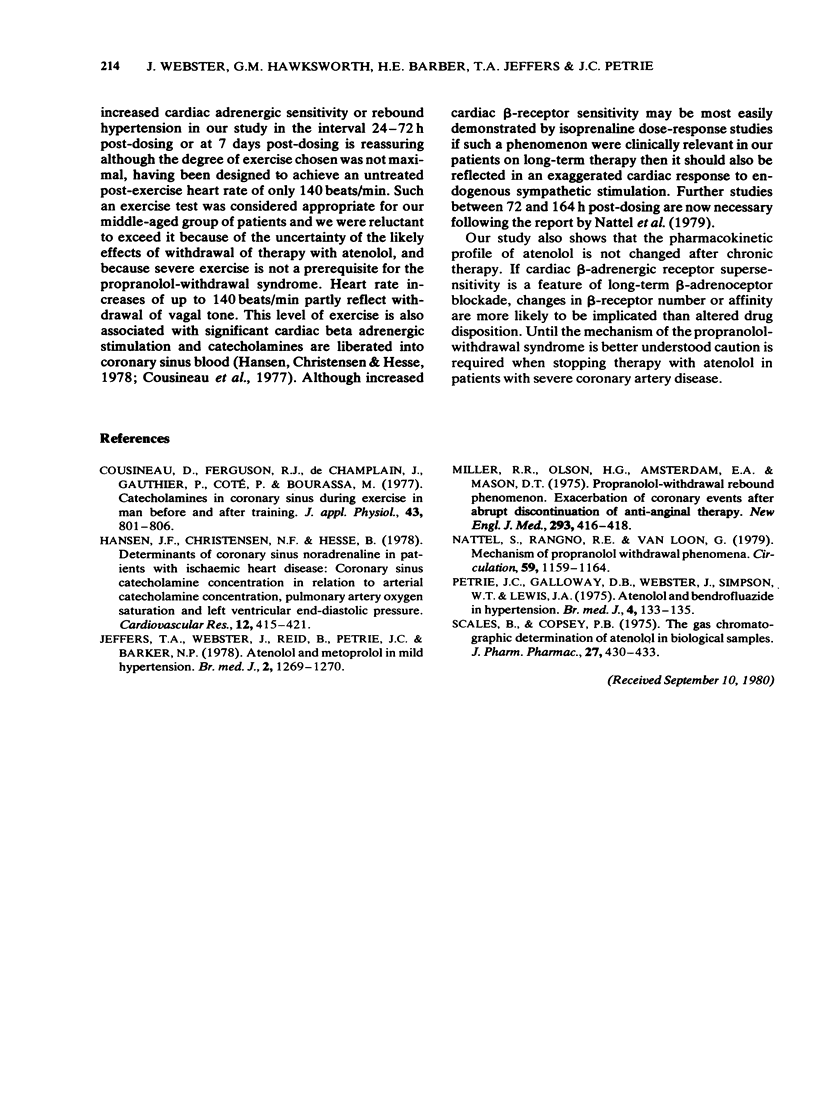Abstract
1 The offset of effects on blood pressure and heart rate after cessation of long-term therapy (19 +/- 3.6 months) with atenolol (200 mg once/daily) was studied in six hypertensive patients. 2 Withdrawal of atenolol resulted in a gradual return of lying, standing and post-exercise systolic and diastolic blood pressure levels and heart rate towards the baseline value. The offset of effect greatly exceeded the time for elimination of atenolol. 3 No significant differences in the pharmacokinetic profile of atenolol were evident between the values obtained following chronic dosing and an acute single-dose study. 4 The lack of clinical evidence of increased cardiac adrenergic sensitivity or rebound hypertension following withdrawal of atenolol contrasts with reports of a withdrawal syndrome following cessation of therapy with propranolol. Nevertheless until the mechanism of the propranolol-withdrawal syndrome is better understood caution is required when stopped therapy with atenolol in patients with severe coronary artery disease.
Full text
PDF



Selected References
These references are in PubMed. This may not be the complete list of references from this article.
- Cousineau D., Ferguson R. J., de Champlain J., Gauthier P., Côté P., Bourassa M. Catecholamines in coronary sinus during exercise in man before and after training. J Appl Physiol Respir Environ Exerc Physiol. 1977 Nov;43(5):801–806. doi: 10.1152/jappl.1977.43.5.801. [DOI] [PubMed] [Google Scholar]
- Hansen J. F., Christensen N. J., Hesse B. Determinants of coronary sinus noradrenaline in patients with ischaemic heart disease: coronary sinus catecholamine concentration in relation to arterial catecholamine concentration, pulmonary artery oxygen saturation and left ventricular end-diastolic pressure. Cardiovasc Res. 1978 Jul;12(7):415–421. doi: 10.1093/cvr/12.7.415. [DOI] [PubMed] [Google Scholar]
- Jeffers T. A., Webster J., Reid B., Petrie J. C., Barker N. P. Atenolol and metoprolol in mild hypertension. Br Med J. 1978 Nov 4;2(6147):1269–1269. doi: 10.1136/bmj.2.6147.1269. [DOI] [PMC free article] [PubMed] [Google Scholar]
- Miller R. R., Olson H. G., Amsterdam E. A., Mason D. T. Propranolol-withdrawal rebound phenomenon. Exacerbation of coronary events after abrupt cessation of antianginal therapy. N Engl J Med. 1975 Aug 28;293(9):416–418. doi: 10.1056/NEJM197508282930902. [DOI] [PubMed] [Google Scholar]
- Nattel S., Rangno R. E., Van Loon G. Mechanism of propranolol withdrawal phenomena. Circulation. 1979 Jun;59(6):1158–1164. doi: 10.1161/01.cir.59.6.1158. [DOI] [PubMed] [Google Scholar]
- Petrie J. C., Galloway D. B., Webster J., Simpson W. T., Lewis J. A. Atenolol and bendrofluazide in hypertension. Br Med J. 1975 Oct 18;4(5989):133–135. doi: 10.1136/bmj.4.5989.133. [DOI] [PMC free article] [PubMed] [Google Scholar]
- Scales B., Copsey P. B. The gas chromatographic determination of atenolol in biological samples. J Pharm Pharmacol. 1975 Jun;27(6):430–433. doi: 10.1111/j.2042-7158.1975.tb09473.x. [DOI] [PubMed] [Google Scholar]


